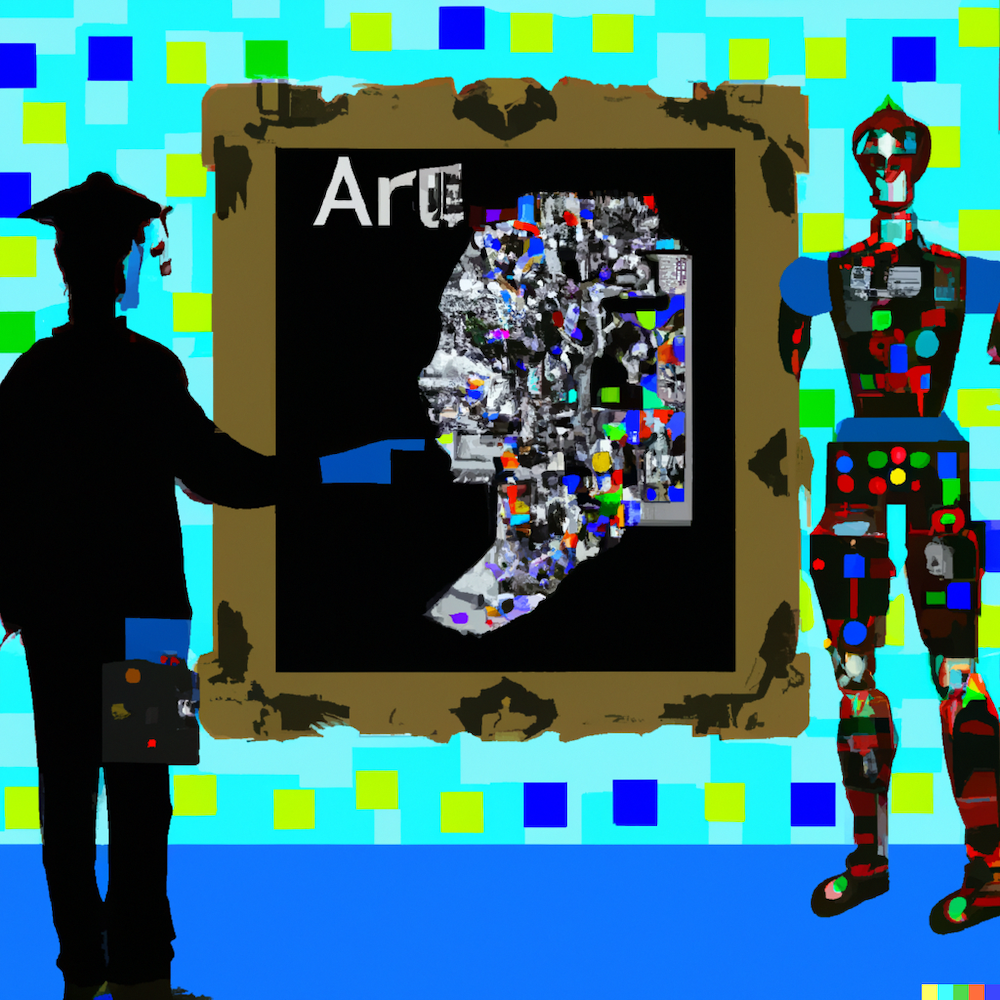Your cart is currently empty!
ASK BABS AI-generated Art (Again)

Dear Babs,
Your last letter really pissed me off. You spent so much time talking about how great AI art is that you glossed over the more serious issues of copyright and intellectual property. What gives?
—Pissed in Pasadena
Dear Pissed,
I only got so many words for this column, and I had a lot to say, so cut me some slack. But you’re right that AI programs like DALL-E and Midjourney raise serious questions and potentially dangerous problems in relation to art. Let’s unpack this.
When it comes to hand-wringing about art, obviously we need to reconsider current laws and regulations concerning intellectual property rights. While it is not a crime to ask an AI to create an image of Joe Biden in the style of Yayoi Kusama and sell the image in all its dot-filled glory on an Etsy store, it does feel just plain wrong. One solution is that all of us start demanding that everyone using AI to create and sell work discloses the data sets, prompts and level of human-AI interaction involved in their process. However, this does not solve the issue of AI systems using specific artworks in their datasets without the artist’s consent. Fortunately, organizations like Stable Attribution are developing systems of accountability to work towards creating new datasets that artists contribute to willingly. It is critical for artists to lead the way in shaping laws and policies that affect AI-generated art in a manner that fosters creativity while still respecting the artistic labor and legacy of artists. If we don’t do this, someone else will—and if it’s the geriatrics who run the US government they will probably create an even bigger mess.
If you want to see the real dangers of developing AI technology, take a look at the latest GPT-4 Technical Report (https://cdn.openai.com/papers/gpt-4.pdf), which details the findings of the developers and testers behind OpenAI’s latest AI. In the document OpenAI admits that GPT-4 “is capable of generating discriminatory content favorable to autocratic governments across multiple languages.” Just as startling is the conclusion, GPT-4 exhibited, “the ability to create and act on longterm plans, to accrue power and resources (‘power-seeking’), and to exhibit behavior that is increasingly ‘agentic.’” Fundamentally its behavior is proving to be more and more autonomous. Now that is some scary shit.